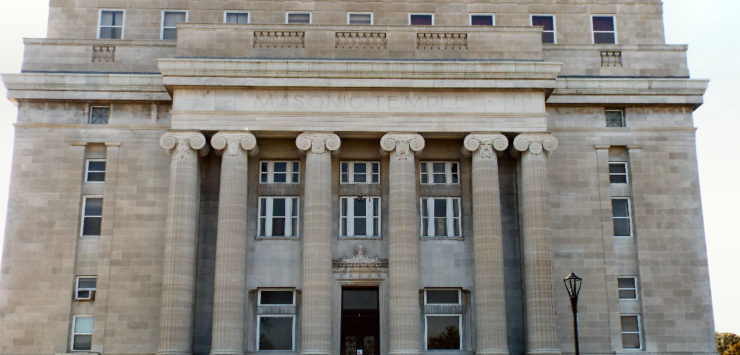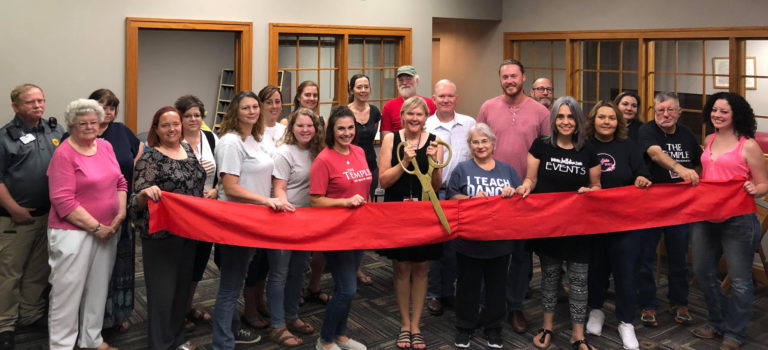
A celebration Friday evening highlighted the continued rebirth of an iconic old building in Salina.
The former Isis Shrine Temple, now the Salina Innovation Foundation is open for business. Maybe for your business.
The venerable facility is a co working space, and is now home to nearly dozen different businesses and organizations. Executive Director Mary Landes tells KSAL News there are various businesses now on three levels.
The co-working concept allows for networking, which is so very important in business, as well as private areas to work. They have bright space which is adaptable, including a common area, a conference room, a classroom, a kitchenette, a private phone booth, and a comfortable, removed office area.
The facility still accommodates weddings and other similar type celebrations, and its unique theatre is still available for public use.
The Salina Innovation Foundation, formerly known as The Masonic Center and the Masonic Temple, was started in 1922 and completed in 1927. “The Landmark of the Valley” is widely famed for its Ionic columns and row of copper gargoyles along the roof line.
The rectangular concrete building is clad in Indiana limestone and Tennessee marble and measures 125 feet by 170 feet. Its monumental size and simplified classical form projects a sense of importance, permanence, and stability. The fluted Ionic columns each measure 42 feet with five foot diameters. A row of copper gargoyles some 86 feet above the ground form the cornice surrounding the entire rooftop.
Bronze doors, art glass chandeliers and windows and “angelwing” mirror marble wainscoting highlight the inside. Ornate egg and dart molding found near the ceiling throughout the building symbolizes Life and Death. The Center was designed around its magnificent third floor auditorium, which features a 36-foot high ceiling and has a seating capacity of 1,200 people. The elevated stage contains 104 century-old, hand-painted scenery drops that provide background for stage activities.
The building was placed on the National Register of Historical Places in 2000.
